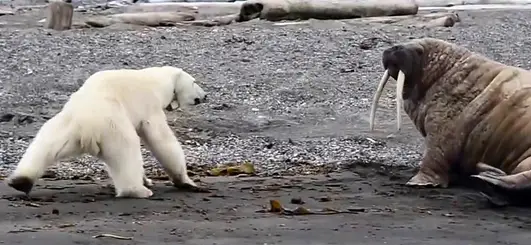Alaska, a vast and wild frontier, is home to some of the most formidable and awe-inspiring wildlife in North America. Its diverse habitats, from coastal rainforests to arctic tundra, support a variety of animals, some of which pose significant dangers to humans. This article delves into the most dangerous animals found in Alaska, highlighting their behaviors, habitats, and the risks they present.
1. Brown Bears (Grizzly Bears)
The brown bear, also known as the grizzly bear, is one of the most iconic and formidable predators in Alaska. With a population estimated at about 30,000, these bears are most commonly found in the coastal regions and the interior forests of Alaska. Grizzlies can weigh up to 1,500 pounds and stand up to 8 feet tall on their hind legs. Although they primarily feed on fish, plants, and small mammals, grizzly bears can attack humans if surprised, threatened, or if they perceive a human as a threat to their cubs.
2. Polar Bears
Polar bears, the largest land carnivores, are native to the ice-covered waters of the Arctic Ocean. They are powerful predators, primarily feeding on seals. Polar bears are found along Alaska’s Arctic coast and on the sea ice extending from it. These majestic creatures are generally not aggressive towards humans but can pose a significant threat if they feel threatened or if they’re in search of food, a situation becoming more common as climate change reduces their sea ice habitat.
3. Moose
While moose may not be predators, they are one of the largest and most dangerous mammals in North America. Each year, moose are responsible for more injuries to people in Alaska than bears, often due to surprise encounters that lead to the moose charging. During the mating season in the fall and when mothers are protecting their calves in the spring, moose can be particularly aggressive.
4. Black Bears
Smaller than their grizzly cousins, black bears are widespread throughout Alaska. They are highly adaptable, living in forests, mountains, and even the outskirts of urban areas. Black bears are generally shy and avoid humans, but they can become dangerous if they associate humans with food, leading to aggressive behavior.
5. Wolves
Alaskan wolves are large and efficient predators that typically avoid human interaction. However, there have been rare instances of wolves attacking humans. These incidents often involve wolves that have become habituated to humans or are suffering from diseases like rabies.
6. Wolverine
Wolverines, though small, are fierce and tenacious predators known for their strength and aggression. They inhabit the remote and mountainous regions of Alaska and primarily feed on carrion but will not hesitate to defend themselves fiercely if threatened.
Conclusion
While these animals are among the most dangerous in Alaska, it’s important to remember that attacks on humans are rare and often the result of human actions such as getting too close or surprising the animal. Respecting wildlife and practicing safety measures can significantly reduce the risk of dangerous encounters. Alaska’s wilderness is a spectacular and wild place where these animals play a crucial role in the ecosystem. By understanding and respecting the dangers they present, humans can coexist peacefully with these remarkable creatures.

